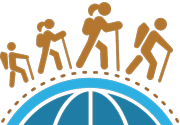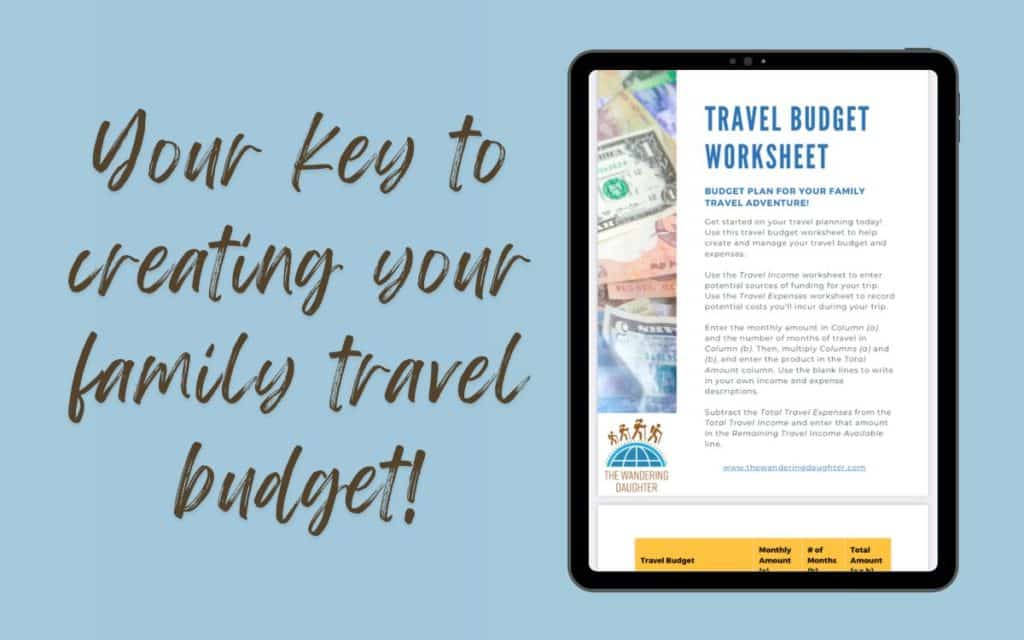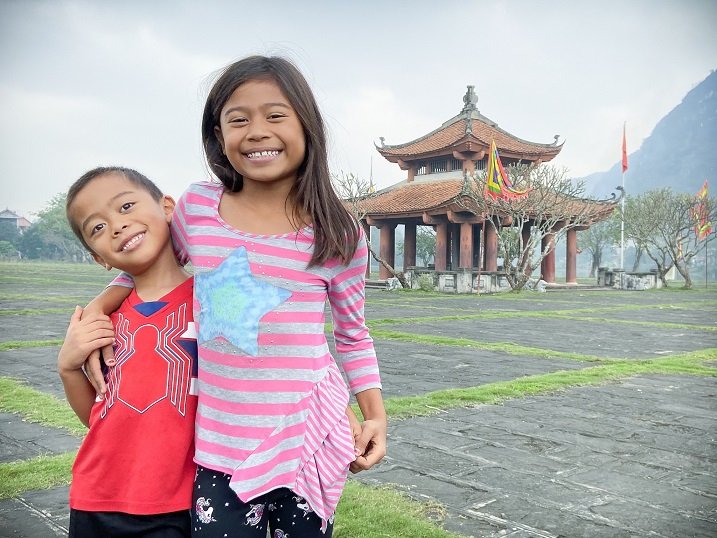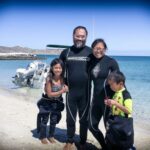5 Best Homeschooling On The Road Tips For Newbies
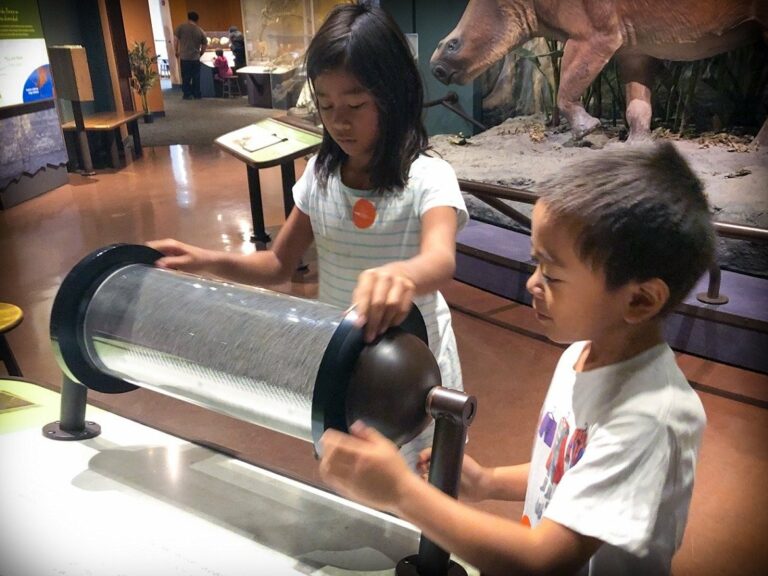
Since we worldschool and homeschool while we travel, people sometimes ask me, “how does homeschooling on the road work?”
To this, I often reply, “it depends on the day!”
Sometimes we have great days, and other times it ends in meltdowns. Part of being a homeschooling family, I am learning, is being able to gauge what your child is feeling. And then, adjust accordingly.
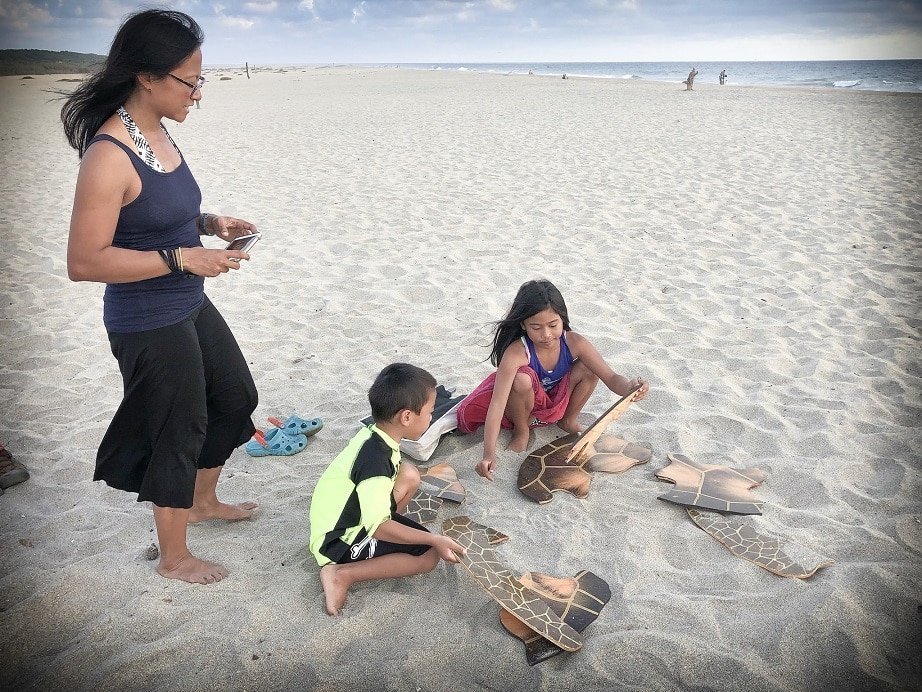
What I’m also coming to realize is that I shouldn’t beat myself up if a day goes by and we don’t do any kind of schoolwork. Everyone deserves a break from time to time.
Home schooling on the road is an exercise in patience and flexibility. But it’s one that brings with it so many positive benefits!
This article was originally published on March 30, 2019.
This post may contain affiliate links. That means I may receive a small commission if you click on the link and purchase something. But don't worry, this will not result in any extra costs to you.
My top 5 resources to start homeschooling on the road
Want to get started on worldschooling and roadschooling? Take a look at my top 5 homeschooling travel resources:
- Trailblazing Families 12-week worldschooling course
- Outschool online classes for kids
- Lingopie and Duolingo language learning apps
- Khan Academy math curriculum
- Education.com worksheets
Plus, don’t forget about my ebook, Hey Kids, Let’s Go Travel! which is packed with tools and resources for worldschooling.
Homeschooling on the road for newbies
Before I started homeschooling, I often contemplated the virtues of homeschool vs public school. I have always been an avid supporter of public schools. Having spent elementary school and middle school at a public school, I really didn’t have any issues with public school as a student.

In my opinion, many public schools are under-rated. And I also think having your kids attend public schools helps them connect with their peers. My daughter was a public school girl before we left, and she loved it.
But now that I’m traveling, and looking at the homeschool vs public school debate from a different angle, I am realizing there are some benefits to homeschooling as well.
For one, homeschooling offers more flexibility in learning styles. I am seeing this in my youngest son. He struggles to stay focused on the task at hand, but is brilliant when it comes to doing math problems or science activities. In the public school setting, his attention challenges often means he needs more time than others to complete a task. And that leads to more stress for him.
As a traveling family, homeshooling is really our most practical option for educating our kids. Enrolling them in schools in each place we visit would be too disruptive for the kids. So instead, we choose to teach them ourselves, using a hodgepodge of lessons and curriculum.
How does homeschooling on the road work?
So then it goes back to the question, how does homeschooling on the road work? Well, after almost two years of homeschooling, we’ve found a groove that works for us. Since we don’t follow a specific curriculum, it’s really about being flexible, and using our travel experiences to guide our kids’ learning.

When we were road-tripping across the United States, we focused a lot on science. We were visiting a lot of national parks, learning about nature, as well as science and kids’ museums. In Mexico, we did a lot more reading and social studies. When we were in Costa Rica, we focused again on science, as the country has so many nature-based activities to do. I’m sure that when we continue on to Europe, our focus will be more on history.
For our style of homeschooling, we’re really focused on the experiential learning. It’s helped make homeschooling less stressful for me, because I don’t have to think too hard about how to make learning applicable to our kids.
However, being a bit of a record-keeping freak, I decided to create a worldschooling tracker to help me keep track of the lessons I do with my kids each day. If you're looking to have a tracker for your kids' education, this is a great tool for putting together a homeschooling portfolio for your kids. And it's available for you to use for free.
Our tips for homeschooling on the road
Even if you’re not traveling full-time like us, there are still ways to incorporate learning into your travels. And even if you’re not a homeschooling family, you can still make your family vacations more educational and beneficial for your kids.

If you're thinking to yourself, how will homeschooling on the road work for my family, have no fear. I've been there and can honestly say that you'll figure out something that will work for you. But just in case, here are some of my tips for homeschooling on the road with your kids.
1. Outsource learning while homeschooling on the road
For newcomers to homeschooling on the road, it’s easy to think that you need to be the provider of lessons to your kids all the time. In reality, you can (and absolutely should!) rely on others to help teach your kids.
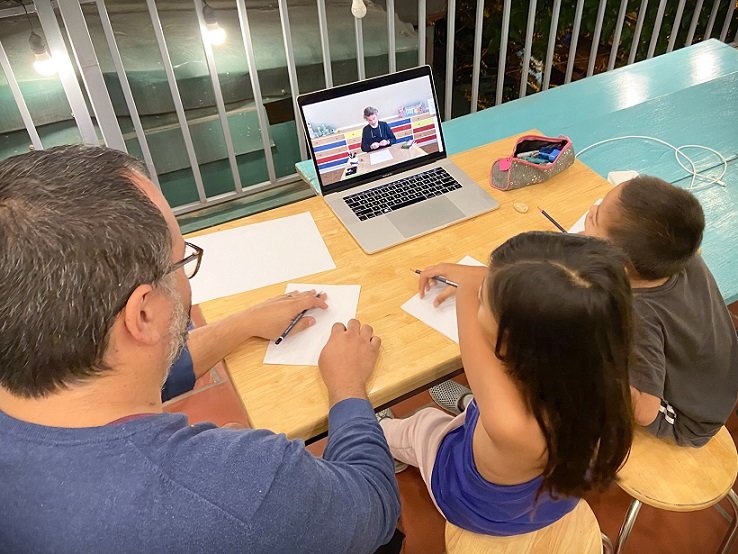
Whenever you can, look for opportunities for your kids to take local classes and workshops. During our travels, our kids have done chocolate making workshops, cooking classes, board game camps, language classes and more. This is a great way to connect to local communities.
If you can’t find a local class your kids are interested in, look for classes online. We love using Outschool because they have classes in all sorts of subjects: coding, history, physical education, art - you name it!
2. Don’t be afraid to use YouTube
When it comes to education, we tend to think that all technology and screen time is a bad thing. But technology can actually be quite educational. One of the best homeschooling tips I have is to make YouTube your friend. We like watching videos together, and then discussing what we learn from those videos.
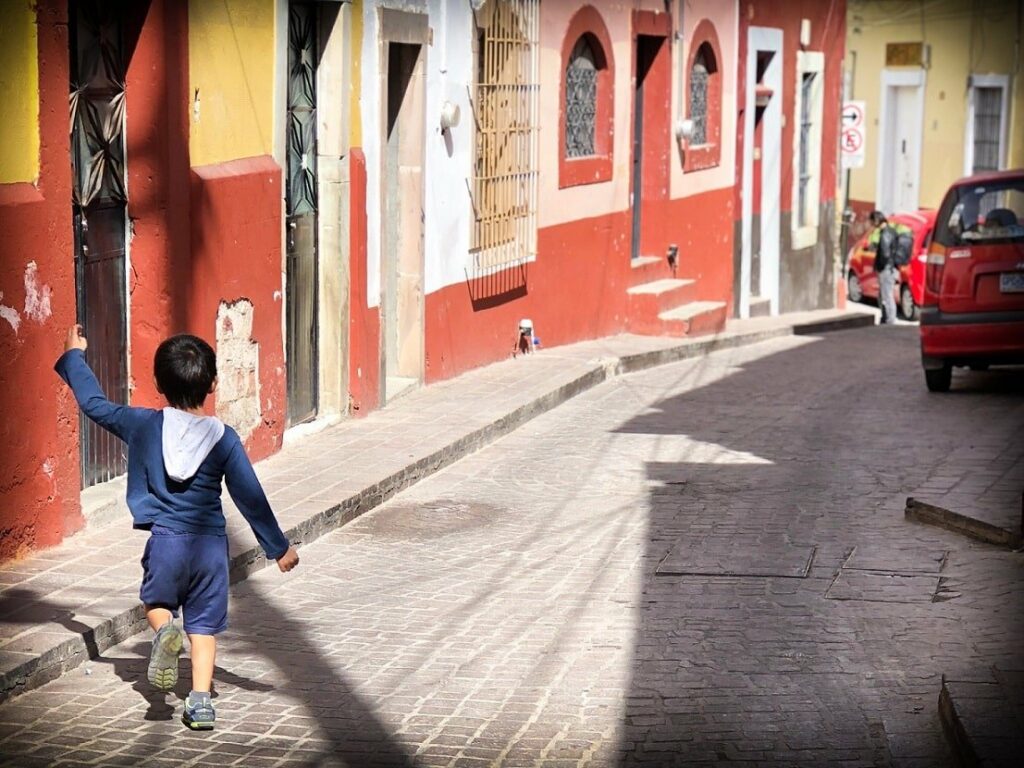
When we go to a new city, we watch YouTube videos about that city. There are a lot of vloggers out there, and sometimes their videos are really good and informative! Of course, you have to sift through some of them ahead of time. For science and geography types of videos, SciShow Kids and Geography Now! have some fun videos. We also really enjoy Crash Course.
3. Turn sight-seeing into a field trip
Another one of my homeschooling tips is to take advantage of field trips. Science and children’s museums are great for field trips, as are zoos and aquariums. And, it’s a great way to put in a full day of homeschooling without much work on your end! If you’re in the United States, and you have a membership to a museum in the city, research whether it’s part of a reciprocal program. That will give you free admission to museums in other cities.
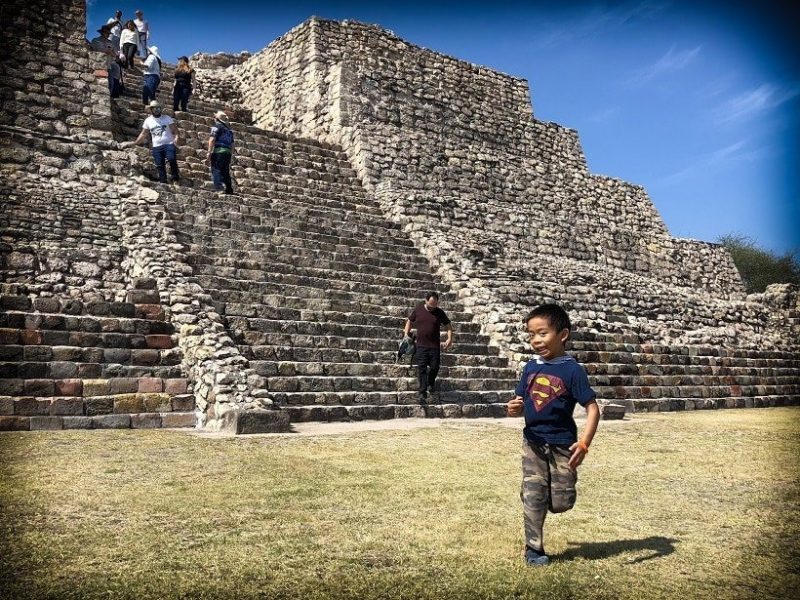
Before or after we go on field trips, we like to have a short discussion about the kinds of things that are at the museum. For example, when we went to the Regional Museum in Costa Rica, we watched a few videos about the Mayan civilization in Central America. Then, when we were at the museum, the kids pointed out some of the artifacts that they recognized from the videos.
4. Build your homeschooling on the road lessons around sight-seeing
Related to the previous tip, I also suggest building your lessons around the sight-seeing activities that you’re planning on doing during your travels. Even if you’re planning on doing things that don’t involve museums, you can always make the experience more educational for the kids.

When we were in Costa Rica, we did a zip-lining canopy tour. So that afternoon, we learned about the different layers of the rainforest, and what animals live in those layers. We also visited a hot springs water park near Arenal volcano. So the day before, we learned about where hot springs come from and how they are formed.
It’s not too difficult to put together a quick lesson related to an activity that you and your family are planning to do.
5. Keep a homeschool tracker on your phone
As I mentioned earlier, I am a record-keeping freak! So when I started homeschooling on the road, I put together a homeschool tracker on Google sheets so that I can keep track of the lessons that we do with our kids.

Part of the reason I do this is because our home state’s homeschool regulations require us to cover eleven different subjects when we teach our kids. My homeschool tracker helps me know what subjects I’ve covered in my lessons.
Another reason for keeping a homeschool tracker is to be able to see how much time you spend on homeschooling. On average, we spend about 2-3 hours a day on homeschooling.
This doesn’t seem like much, but if you ask most homeschooling families, you’ll find that it’s pretty average for young kids. You really don’t need to invest too much time teaching your kids!
How will you do homeschooling on the road with your family?
Before I became I homeschooling parent, I had some preconceived ideas of how to answer the question, “how does homeschooling work on the road.” Now, I am realizing that it all really depends on the family. And it also involves looking beyond the standard definition of homeschooling.
These days, homeschooling doesn’t have to mean that you stay at home! If your schedule is flexible, you can go pretty much anywhere and teach your kids. And being flexible with the curriculum you use is also a key.
Are you a homeschooling family? How does homeschooling work for you and your kids? Share them with me in the comments.
Itching to take your homeschooling lessons on the road? Use my ebook, Hey Kids, Let’s Go Travel! as a resource for tools, advice, and action steps for planning your trip.

Need help thinking through how to budget for a family trip? My Travel Budget Worksheet is just the tool you need! Click here to receive your free copy by signing up for my newsletter.
Want to connect with me on social media? Find me on Facebook, Instagram, Pinterest, and Twitter. And for those of you who are dedicated to traveling more responsibly, sustainably, and ethically, join over 500 like-minded families on my Facebook group, Responsible Family Travel.
